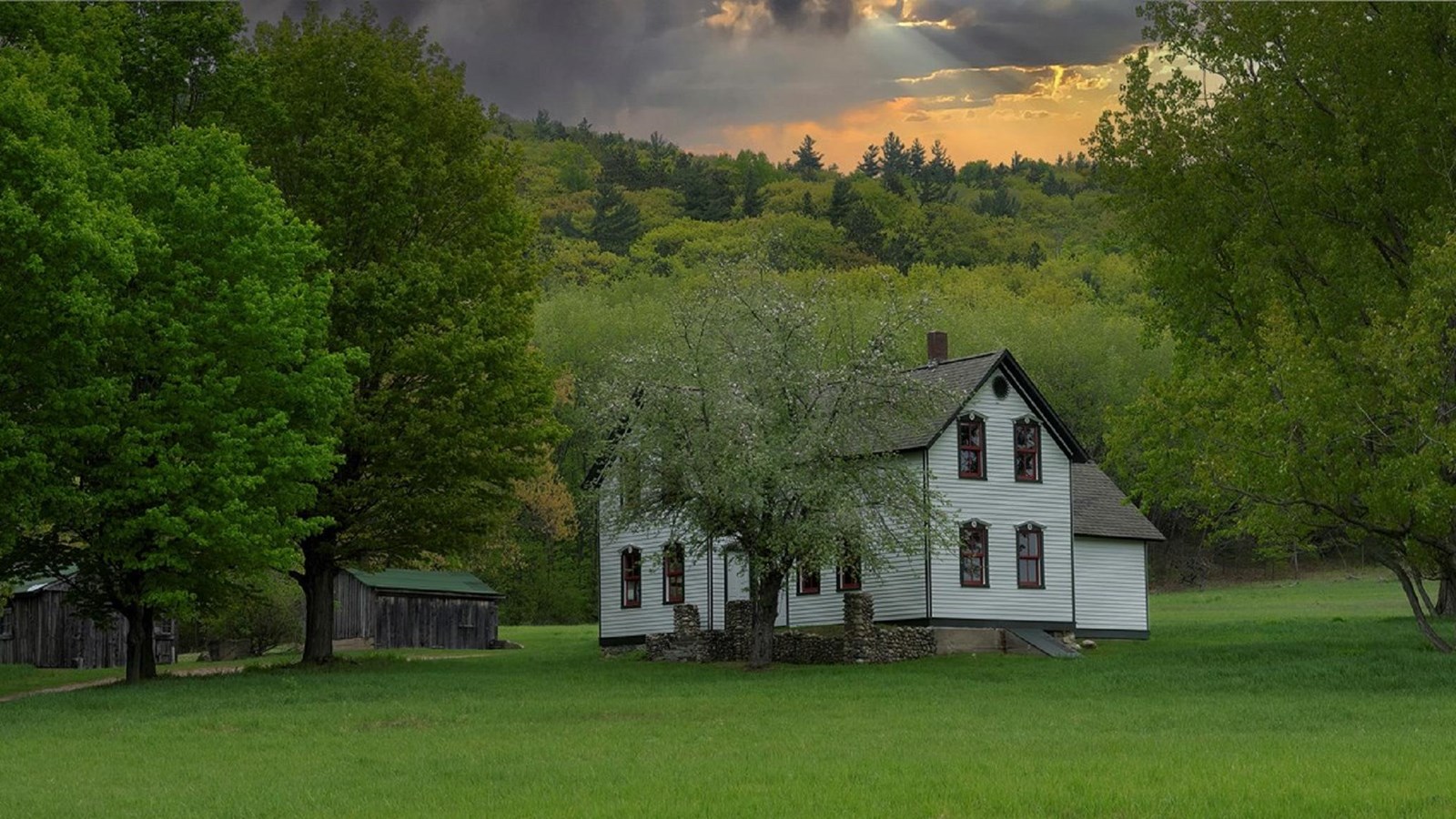Last updated: September 3, 2025
Place
Martin & Allay Basch Farm

NPS / A. Byerly
Martin Basch, a former German soldier and political prisoner, arrived on North Manitou Island with his wife, Allay, in 1868. They left several children in Germany and had two children while on the island. Basch's brother, Nicholas, had already immigrated to the United States in 1859.
Basch was a skilled blacksmith and worked for farmers in the vicinity of Port Oneida. He also was a carpenter, who helped to build farms and churches in Port Oneida, Good Harbor, and Arcadia.
The farmhouse reflects the carpentry skills of the Basch family. The window pediments and gables feature ornate wood details, and the gable porch pediment has a decorative sunburst pattern. The vernacular Queen Anne house has an irregular floor plan, two stories, a gable roof with several one story cross-gables, and clapboard siding with cornerboards. The use of fieldstones in the foundation of the house porch and pillars was a common practice in Port Oneida.
The Baschs raised corn, beans, potatoes, and approximately 50 head of beef cattle on their 110 acre farm. Potatoes, the cash crop, were sold at Cedar, and surplus corn and wheat were marketed at Crystal River. The Baschs raised dairy cattle for their own use. At one time, they had about 300-400 turkeys.
They stopped farming around 1969.
